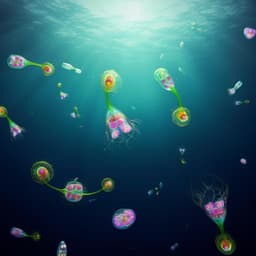
Earth Sciences
Decoding drivers of carbon flux attenuation in the oceanic biological pump
M. Bressac, E. C. Laurenceau-cornec, et al.
This study by M. Bressac and colleagues reveals the dynamics of the biological pump and the role of microbial processes in oceanic carbon flow. Using in situ experiments from C-RESPIRE, the research uncovers how microbial degradation impacts particle flux attenuation across diverse oceanic environments.
~3 min • Beginner • English
Related Publications
Explore these studies to deepen your understanding of the subject.







